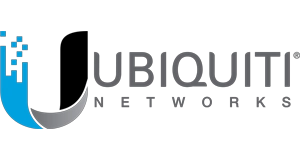It’s hard to be surprised in these interesting times, but almost everyone was shocked when Microsoft announced in June, the release date of Windows 11. Why would Microsoft go back on their 2015 statement of Windows 10 being the “last version of Windows” and what does this mean for businesses going forward?
A leaked version of the Windows 11 operating system (OS) first appeared online halfway through June, showcasing a revamped user interface, centred start bar and lots of rounded corners. Just over a week later, on the 24th of June, Microsoft announced the end of year arrival of the new OS and the official End of Support date for the current Windows 10.
With a shiny, new OS on the horizon what does that mean for businesses and their fleets of Windows 10 devices. It was not long ago that we faced the challenge of upgrading Windows XP to Windows 7, but Microsoft have assured us that the move from Windows 10 to 11 will not be as painful. At its core, Windows 11 will keep much of Windows 10 just with a massive facelift. This is not to say that there will not be major changes that could result in time and money for businesses to adopt the new OS.
One major hardware requirement of Windows 11 is its necessity for a TPM 1.2 or 2.0 chip. TPM or Trusted Platform Module chips are, in their most common form, a component on a computers motherboard that provide security related functions at a hardware level. This, no doubt, is one of the many ways Microsoft are trying to protect its customers in the face of today’s very real cyber security threats. It would be rare to find a PC or laptop in today’s businesses that don’t already have TPM chips in place however, it is very possible that it is disabled by default – presenting a challenge should Windows 11 try to be installed.
The question of why Microsoft would go back on its earlier statement of Windows 10 being the last version could come down to a couple of things. One important factor is Microsoft’s shrinking market share of operating systems globally. With Chromebook and iOS chipping away at Microsoft’s share of the market perhaps it was time for something drastic to stem the bleeding. A great way to drive demand is to add a shiny new faceplate over a familiar product. I have already had to discuss when and why we will be adopting the new Windows OS with our own staff.
At the end of the day Microsoft are trying to support their partner base and clients in this new normal. Through hardware refresh cycles rising to meet security needs as well as its user wellbeing.
I, for one, already have plans to relocate my start button, hide all widgets and disable the Clippy Office Assistant this Christmas when I download Windows 11 with the rest of the world.
If you have any concerns about the inevitable upgrade to Windows 11 and how it will affect your business, please feel free to get in touch and we will be happy to have a chat with you about it.







